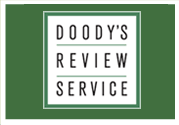Everybody knows about the importance of usability these days with the recent, less than ideal rollout of the HealthCare.gov website (http://www.nngroup.com/articles/affordable_care_act_usability_issues/). In the library world, many academic health science libraries have long worked on improving the usability of their websites in support of academics and research. Other special libraries, without as high a profile as major public sites, have perhaps focused more on licensing the right tools and providing excellent services, to the neglect of making their internal websites the best they can be.
Allina Health Library Services recently redesigned their internal website, under the guidance of the Allina Health’s usability analyst and web designer. The changes did not appear, on initial review, that dramatic. However, we were able to conduct informal usability assessments with representatives from all job roles (i.e., quality analysts, administrative assistants, physicians, nurse managers, staff nurses, health unit coordinators, pharmacists) using a web page prototype before we released the new page. Based on what we learned, we tweaked the design, placement of links, etc., and we hope our customers will have a better experience as a result. We plan to survey our customers on a regular basis to find out how things are working.
Outside of the library context, usability can take on life or death importance. It’s well known that the aeronautics field has developed best practices in industrial design and ergonomics for the prevention of accidents and human error that have been shared with other fields. In healthcare, a recent blog post on KevinMD.com connected the importance of good EHR (electronic health record) design with patient safety (http://www.kevinmd.com/blog/2014/01/ehr-design-affect-patient-safety.html). Depending on who you talk to, doctors, nurses, and other members of the healthcare team have been suffering or embracing the transition to electronic records for a while now. The jury may still be out on the impact of electronic medical records, but it is clear that the changes are affecting direct workflow in the providers’ worlds, and it’s important to focus on those changes if the systems will eventually contribute more positive than negative results.
There are many usability resources available. One excellent source is Jakob Nielsen’s posts on the Nielsen Norman Group’s site, including his Usability 101 post, which sets out the following principles for gauging how easy it is to use a site (http://www.nngroup.com/articles/usability-101-introduction-to-usability/):
- Learnability: How easy is it for users to accomplish basic tasks the first time they encounter the design?
- Efficiency: Once users have learned the design, how quickly can they perform tasks?
- Memorability: When users return to the design after a period of not using it, how easily can they reestablish proficiency?
- Errors: How many errors do users make, how severe are these errors, and how easily can they recover from the errors?
- Satisfaction: How pleasant is it to use the design?
As librarians, we can learn as much as possible about usability best principles and how we can contribute to better system design, whether it is with our library websites, vendor interfaces for products we license, or even in our daily lives.
